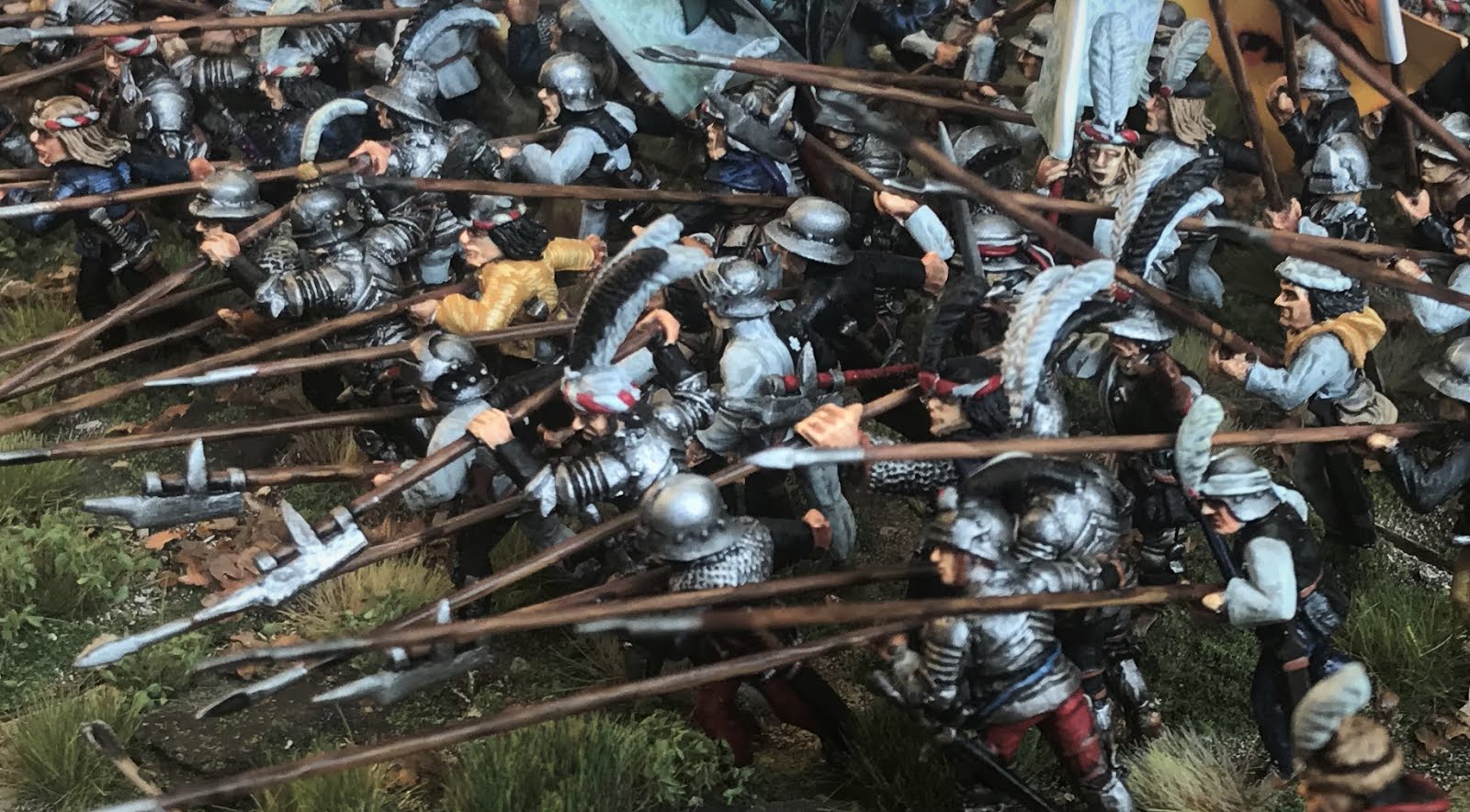Elite Austrians base-coated white with light tone Army Painter brushed on
Heres a quick run down on the latest version of my white painting technique. I've never been that happy painting white, I think this is a pretty common affliction amongst figure painters. Embarking on this Austrian project meant I had to sort this out. I'm getting there. I'm still not 100% satisfied but this version seems reasonable plus it's quite quick which is another all important factor.
Next step: The figures are dry-brushed with Vallejo "Grey white No.993
I kicked off with my usual undercoat of white from Halfords, before brushing all the relevant white bits with Army Painter Light Tone. I was quite generous with this, but if it pooled too much I spread it around a bit before it dried. Drying takes a while, probably at least 2 hours, if you are of a cautious nature then double that.
Final white highlights were Vallejo Ivory No.918, followed by "normal" white No.951.
Once the base white was sorted out I painted the figures as normal, blocking in the black on the helmet, boots, musket, cartouche and bayonet scabbard, then highlighting the musket in gunmetal and the black bits in German Grey. A tan base coat on the backpack, A dark brown on the musket, and a wash of Paines' Grey oils on the greatcoat. Block in the flesh, then the base of the facings; in this case "Gunship Green".
Then I washed the flesh with Burnt Sienna oils and the backpack and waterbottle with Burnt Umber oils.
Then a highlight for the facings in German Camo bright green, this needs a couple of thin wases sometimes to give it a bit of depth.
The greatcoat was picked out in neutral grey and the helmet given a quick dry-brush in the same to pick out the detail. Then the yellow crest was dotted on, and the musket highlighted in a light brown, the water-bottle was washed over with a Windsor&Newton brown ink and the flesh highlights done. Gold bits picked out. and Steel on the musket re-touched
Finally the white highlights were done, first in Ivory and then an additional highlight in White. A matt artists varnish brushed on and thats about it.
Like I said, There are plenty of people who achieve better results than this out there, but with over 1,000 infantry to paint time is a factor here. Whole thing from soup to nuts was about 4 hours for 15 figures (excluding the Army Painter drying time, in this case overnight). This is a sort of managable number for me. 3 approximate batches like this and I get a 48 man unit. These go into the box with the first 24 so I only have about 8 command figures to finish the unit. Then I think we might have a little parade of the first 4 btns!
Free Counter




































4 comments:
These look good -- probably the best yet. Still seems quite labour intensive. Would it work to drybrush a heavier white over the army painter and leave it at that?
Looking forward to seeing the battalions in their full splendor.
Anything on the WWII rules from Gerry?
Chris
Looking good Chris.
That technique looks very effective. I am amazed though that you can turn out almost 4 figures per hour. I've never managed more than 1 per hour whatever method I try!
Ian
Chris - who would of thought to reverse the process for white? I think you might be on to something here - its a great result and getting that sort of finish on 15 figures in 4 hours is nothing short of amazing. Great stuff.
Cheers,
Doc
Post a Comment